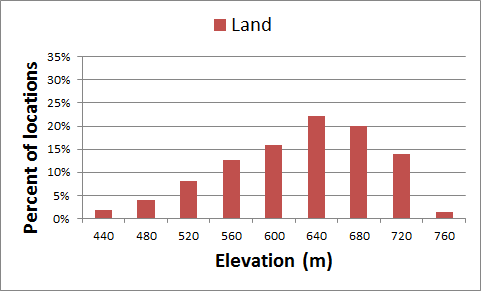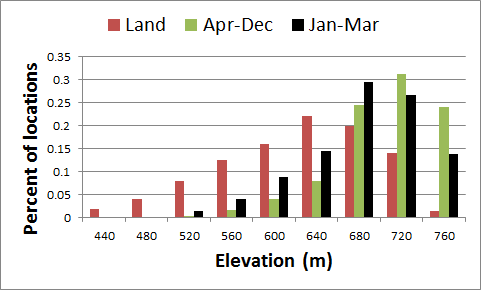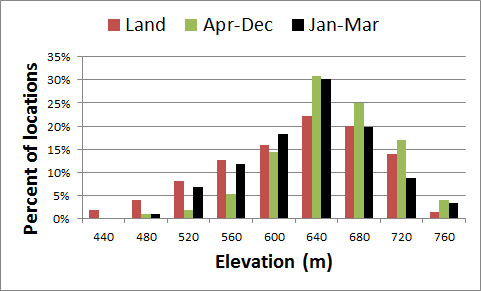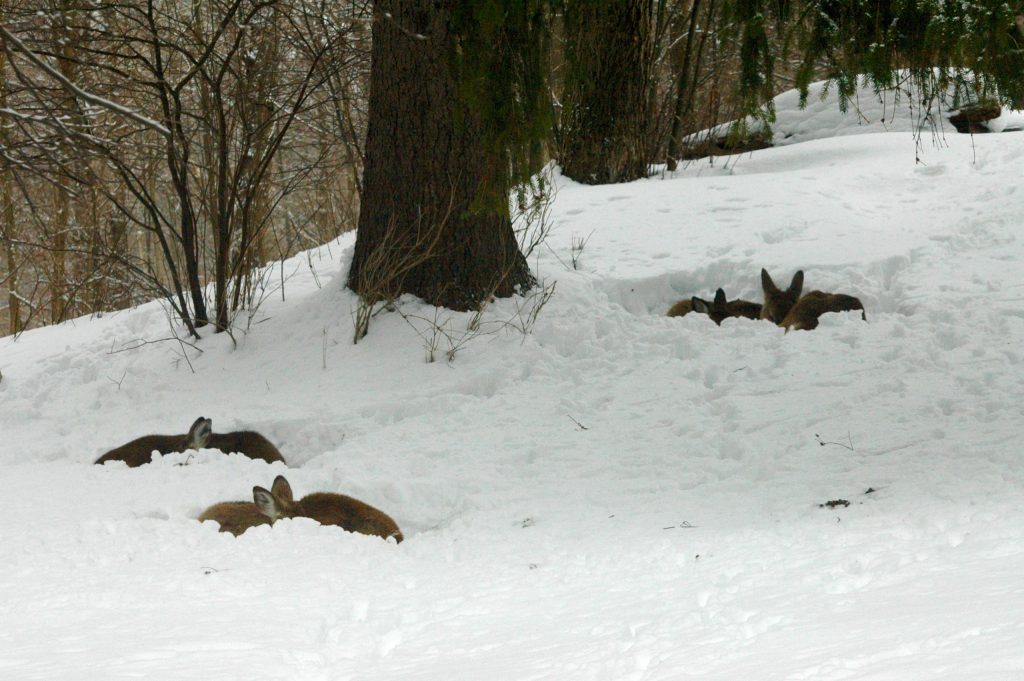We hate to break it to you but Pennsylvania winters just aren’t that hard. Sure it gets cold, and yes, it snows. But take it from two people who grew up in New England and spent two winters (that’s 2 too many, by the way) on the frozen tundra of Minnesota — PA winters are a piece of cake.
Don’t believe us? Then talk to the deer. Pennsylvania deer can’t be bothered to yard or migrate (be it long or short). Both behaviors are survival tools and our winters don’t require deer to break either tool out of the toolbox.
But there is often discussion of how deer move from higher elevations to lower ones in winter in Pennsylvania. Are Pennsylvania winters enough to push deer down the mountain?
To answer this question, we enlisted the help of GIS guru, Alyssia. She is master of all things mapping, able to scale mountains of data (received from GIS collars we have in the field) in a single bound. Alyssia placed a grid across our northern study area containing 17,810 cells then calculated the elevation in each cell. Broken down by 40-meter intervals, here’s what the range of elevations looked like across this study area.

So where did our collared deer spend their time in winter (Jan-Mar 2014)? Was it different from spring, summer, and fall (Apr-Dec 2013)? Take a look at the data.

Deer locations in winter (black) tended to be more common at lower elevations compared to the rest of the year. For example, look at the elevations 720 and 760, the green bars (spring-fall) are taller than the black bars (winter). And at lower elevations like 520-680 the black bars are taller than the green bars.
But if you look at the overall graph, it is weighted heavily towards higher elevations. We actually didn’t catch many deer at low elevations (no green or black bars) and we caught a lot of deer at high elevations.
Remember, we catch deer in the winter. Look at all those locations at the highest elevations (over 70% of deer locations were >600 m elevation!). It doesn’t look like deer are afraid of heights in the winter.
Why? Because Pennsylvania deer are homebodies. Deer do not leave their home range, they just shift WHERE in their home range they spend their time in winter. That is, they move to south-facing slopes at slightly lower elevations. South-facing slopes may receive as much as six times more solar radiation than north-facing slopes. Aspect has a strong influence on temperature. Snow melts faster and temperature differences can be as much as 40 F degrees between a north and south facing slope.
But what about the 2015 winter? That was a “wicked cold wintah,” as they say in New England.
This is a completely different sample of deer in 2015. Our trapping crews did a great job of catching deer that used all sorts of elevations.

But still, during winter over 60% of locations occurred at elevations >600 m.
Deer used the highest elevations slightly less during winter but there is certainly no evidence of them avoiding those elevations. In fact, we have more locations of deer at the highest elevations (take a look at the 760 m elevation) than what is represented on the landscape (the green and black bars are taller than the red bars).
Pennsylvania whitetails see no reason to leave home in the winter. They simply have a change in attitude and move to the sun room.
-Duane Diefenbach and Jeannine Fleegle
If you would like to receive email alerts of new blog posts, subscribe here.
And Follow us on Twitter @WTDresearch
